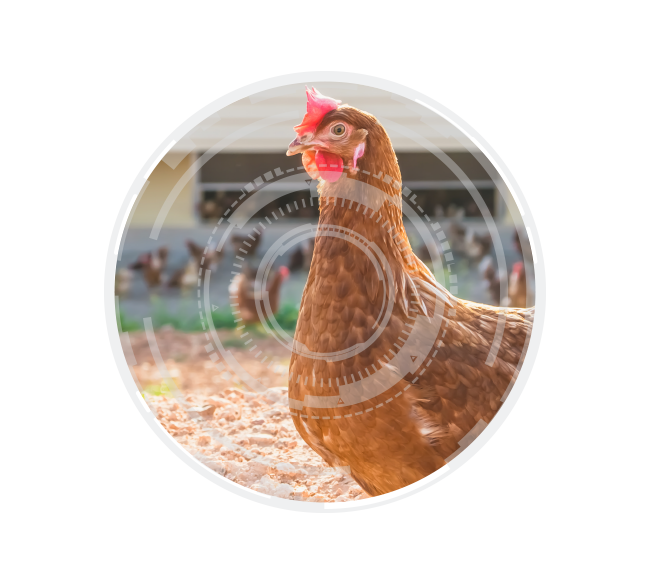The use of imported soybean meal in poultry nutrition has been an issue since years among NGOs and government authorities, mainly in Europe. Production of soybeans for animal nutrition is considered responsible for clearance of rainforests and dislocation of indigenous people in Brazil. Energy use for processing, transport and treatment of soybeans contribute to climatic change. These arguments lead to the request to replace soybean meal by locally produced raw materials. But does Europe have land resources to produce sufficient quantities of alternative protein rich crops? Taking Germany as an example, the production of an equivalent quantity of protein from peas and lupines would require 4 to 5 Mio hectares, i.e. about 33 to 43 % of arable land. In view of the relatively low yield of legumes, production of protein per hectare would be more efficient with wheat or other grain crops. Beyond political efforts to reduce the dependence on imported soybean meal and to stimulate local production of protein rich crops, research should focus on the most efficient use of scarce resources. The first three articles in this issue focus on nutrition research around a global challenge. The next three articles focus on genetic contributions to improved efficiency and bird welfare.
Dr. Klaus Damme and co-authors present results of a recent nutrition experiment at the Bavarian Poultry Research Station in Kitzingen, which demonstrate that eggs can be produced economically without soybean meal. However, rapeseed and sunflower meal are only competitive relative to non-GMO soya. White-egg and brown-egg laying hens reacted differently to alternative feed sources.
Whatever the source of locally available protein, environmental concerns call for a reduction of dietary protein in poultry and animal feed. Supplementation of essential amino acids is common practice. Recent experiments by Dr. Wolfgang Siegert and Prof. Markus Rodehutscord at the University of Hohenheim have shown that further substantial reduction of total protein in broiler rations can be achieved if the non-essential amino acids serine and glycine are taken into account.
Technical treatment of diets is commercially used to improve the utilization of nutrients in poultry feed. Treatments like pelleting, extrusion and expansion can have positive and negative effects on the availability of nutrients. This complex matter is treated in detail in the review of Dr. Terence Z. Sibanda and Dr. Isabelle Ruhnke, University of New England, Australia.
Commercial breeders of laying hens and meat type poultry have contributed to improved feed efficiency since many years, based on measurement of individual records of pedigree stock. Dr. Hans-Heinrich Thiele describes how individual feed intake is measured in pedigree populations of Pekin ducks under nearly commercial conditions and presents genetic parameters of feed efficiency and feeding behaviour.
Björn Andersson and co-authors reviewed the literature on causes of bone damage in laying hens and analyzed genetic differences between and within lines of commercial White Leghorns. They conclude that selection based on a palpation score may help to reduce the frequency of bone damage in the long run, while short-term reduction is more likely to come from improved equipment.
The ban of conventional cages in the EU has led to considerable changes in egg production and international trade. Prof. Hans-Wilhelm Windhorst shows the shift in the European egg industry in the critical years from 2010 to 2015. In contrast to predictions, the number of laying hens increased by about 10 Mio in Germany and by 20 Mio in the EU.
We wish you a Merry Christmas and a happy New Year.
Dr. Klaus Damme and co-authors present results of a recent nutrition experiment at the Bavarian Poultry Research Station in Kitzingen, which demonstrate that eggs can be produced economically without soybean meal. However, rapeseed and sunflower meal are only competitive relative to non-GMO soya. White-egg and brown-egg laying hens reacted differently to alternative feed sources.
Whatever the source of locally available protein, environmental concerns call for a reduction of dietary protein in poultry and animal feed. Supplementation of essential amino acids is common practice. Recent experiments by Dr. Wolfgang Siegert and Prof. Markus Rodehutscord at the University of Hohenheim have shown that further substantial reduction of total protein in broiler rations can be achieved if the non-essential amino acids serine and glycine are taken into account.
Technical treatment of diets is commercially used to improve the utilization of nutrients in poultry feed. Treatments like pelleting, extrusion and expansion can have positive and negative effects on the availability of nutrients. This complex matter is treated in detail in the review of Dr. Terence Z. Sibanda and Dr. Isabelle Ruhnke, University of New England, Australia.
Commercial breeders of laying hens and meat type poultry have contributed to improved feed efficiency since many years, based on measurement of individual records of pedigree stock. Dr. Hans-Heinrich Thiele describes how individual feed intake is measured in pedigree populations of Pekin ducks under nearly commercial conditions and presents genetic parameters of feed efficiency and feeding behaviour.
Björn Andersson and co-authors reviewed the literature on causes of bone damage in laying hens and analyzed genetic differences between and within lines of commercial White Leghorns. They conclude that selection based on a palpation score may help to reduce the frequency of bone damage in the long run, while short-term reduction is more likely to come from improved equipment.
The ban of conventional cages in the EU has led to considerable changes in egg production and international trade. Prof. Hans-Wilhelm Windhorst shows the shift in the European egg industry in the critical years from 2010 to 2015. In contrast to predictions, the number of laying hens increased by about 10 Mio in Germany and by 20 Mio in the EU.
We wish you a Merry Christmas and a happy New Year.








